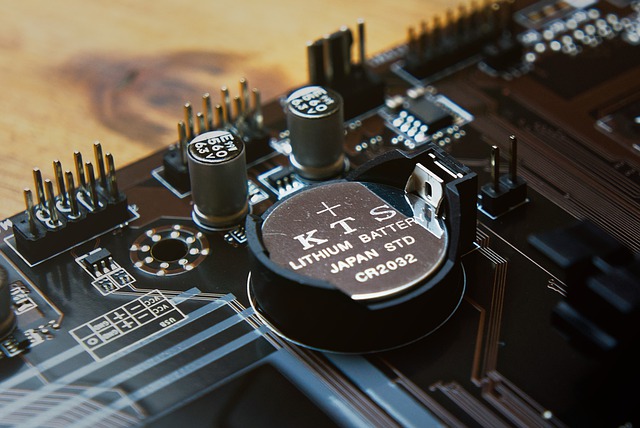The term is often used to refer to a battery-powered chip found in many personal computers that holds some basic information, including the date and time and system configuration settings, needed by the basic input/output system (BIOS) to start the computer.
This name is somewhat misleading, however, as most modern computers no longer use these chips for this function, but instead depend on other forms of non-volatile memory.
CMOS chips are still found in many other electronic devices, including digital cameras and video games consoles such as Microsoft’s Xbox 360 and Sony’s Playstation 3.
CMOS is a type of integrated circuit technology. In simple terms, this means it is one kind of three-dimensional chip that has an entire electronic circuit constructed in it. The term CMOS is often used to refer to a battery-powered chip found in many personal computers that holds some basic information, including the date and time and system configuration settings, needed by the basic input/output system (BIOS) to start the computer.
Some people may incorrectly say that a computer gets its power from this chip or that it is stored on it or even stored inside it; but they would be incorrect because these parts are not rechargeable like batteries and do not store any data at all on them (that what hard drives are for).

It is also sometimes called a chip or microchip. A CMOS consists of six layers of interconnected metal oxide semiconductor (MOS) field-effect transistor (MOSFET) structures, with two n-type MOSFETs and four p-type MOSFETs in each of the three pairs of transistors. All connections between these transistor pairs are made on the top layer of the chip; they are not allowed to pass through any of the thin insulating layers that separate this top layer from the other four. This arrangement ensures that no capacitive coupling exists between any two electrolysis (touching metal plates together causes electrical current to flow between them). The result is an extremely low noise amplifier with high gain-bandwidth product and a high input impedance.
The CMOS was invented by Fairchild Semiconductor in 1960. Its name originally stood for “complementary metal–oxide semiconductor,” but now it has been changed to mean “complementary metal–oxide–semiconductor.” The part of the name indicates that, even though some CMOS chips have no logic circuitry at all on them (the ROMs used for storage), this is not the only area where CMOS technology is used. As we will see later, sometimes low-power versions of other circuits are also built using this type of construction.
A computer’s BIOS chip contains part or all of the basic instructions and data needed to communicate with hardware devices, such as a video display or keyboard, and in some cases it contains the start-up code for an operating system. The BIOS can be thought of as a low-level “program” that initializes the computer so it is capable of running other programs. Over time, these chips have shrunk in size from just under 1 cm2 (0.3 in2) when they were invented to 0.25 cm2 (0.06 in2) or less today; but they still hold all their essential functions on them even though there are no moving parts at all inside them and nothing much larger than an atom could fit between any two points on their surface.
A CMOS chip is different from other kinds of chips in various ways. For one thing, it does not have any printed circuits at all on its surface because there are no wires under the insulating material that covers it. Instead, its surface contains a grid made up of tiny vias (holes) connected to each layer below by leads placed around each via. This makes it possible for the entire chip to act as a circuit through the following principle:
When no battery is inserted, all of these vias are “shorted” together by the metal that fills them. However, if a tiny voltage is applied to just one via, then current will flow from that via to the next below it and so on until full-size voltages have been built up in each layer and they can be passed out of the chip and used to power other devices.
This ability for transistors to control currents without using wires has led some people to say that CMOS chips contain their own batteries . But this is not correct because there are no rechargeable energy stores inside any such chip (that what hard drives are for). And since every via has to be connected to the top and bottom of each chip, there is no way for energy to build up in any part of the chip other than on its surface.
CMOS chips use such an amazingly small amount of current (hundreds or thousands of times less than traditional TTL chips) that they can power themselves with tiny batteries for many years before these batteries need replacing; but eventually all lose their ability to hold a charge and then they must be replaced regardless of whether anything else in your device still works or not.
A CMOS chip may also lose its data when it loses the ability to power itself; this happens because any non-volatile memory (memory that stores information even when you turn off your machine) inside it uses charge stored in a tiny capacitor for its power. When that capacitor is empty, any memory inside the chip is wiped out; but if the battery were to die first, then no data would be lost.
A CMOS chip can hold data for many years because it does not need very much current to operate (current flows through transistors instead of wires) and because it has no complicated parts like the spinning disks found in traditional hard drives . This means that it experiences almost no wear even when powered continuously (which is why devices like laptops tend to last longer than desktops).





